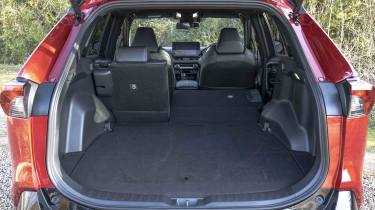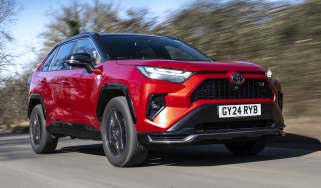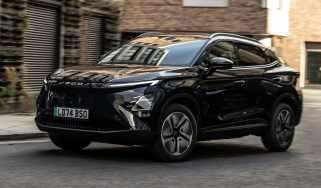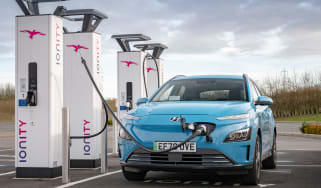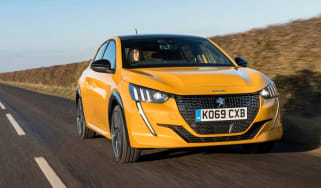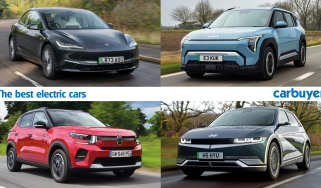Toyota RAV4 review - Practicality & boot space
Interior space stacks up well for a hybrid but other models offer more space for the price
| Pros | Cons |
|
|
For the latest RAV4, the front and rear axles have been pushed 30mm further apart, which has boosted interior space. Even tall adults will be able to sit in the rear seats comfortably, with plenty of legroom and the car’s tall roofline and boxy dimensions providing a decent amount of headroom too. Unlike some hybrid and electric SUVs in particular, there’s plenty of space for feet under the front seats. The RAV4 isn’t quite as wide as some SUVs in its class, however, so it’s a bit tight for three adults across the back seat.
There are some clever features, like the panoramic rear-view mirror that can display a camera view from the rear of the car, that’s handy if you load the boot to the roof or have tall rear passengers. Storage is plentiful too, with a handy tray ahead of the gear selector, two cup holders and a deep storage bin in the centre console. There’s also a roomy glovebox and a further small compartment next to the steering wheel. Rear passengers also get air vents and some USB ports to keep electronic devices topped up.
Toyota RAV4 boot space
The car’s battery is located under the boot floor but its boxy dimensions help to hide it well, with a slightly high boot floor the only clue. Despite this, there is still a decent amount of space on offer. Compared with the old car, the RAV4’s boot has grown to 580 litres (an increase of 79 litres), with 1,690 litres when the seats are folded down. The larger battery of the PHEV version sees the boot shrink but only to 520 litres, so it's still a good size.
That should be plenty of space for families, and the boot compares well with the 575 litres found in the Nissan X-Trail. However, conventionally powered models like the Skoda Kodiaq and Kia Sorento can offer more space and the option of seven seats for a similar price.
It’s a shame the boot isn’t a completely uniform shape, with protrusions at either side covered by plastic trim, but in better news there is a handy space under the floor to keep the PHEV’s charging cable.
Towing
The four-wheel-drive version of the RAV4 is the towing champion of the range, with the ability to pull a braked trailer weighing up to 1,650kg. That's plenty for a large caravan or sizeable trailer. Front-wheel-drive models are limited to an 800kg braked trailer, falling to 750kg unbraked. The PHEV can pull a braked trailer of up to 1,500kg, but its electric-only driving range is likely to tumble when hauling a heavy and boxy load. The Skoda Kodiaq and Cupra Terramar PHEV’s can both tow around two tonnes.

